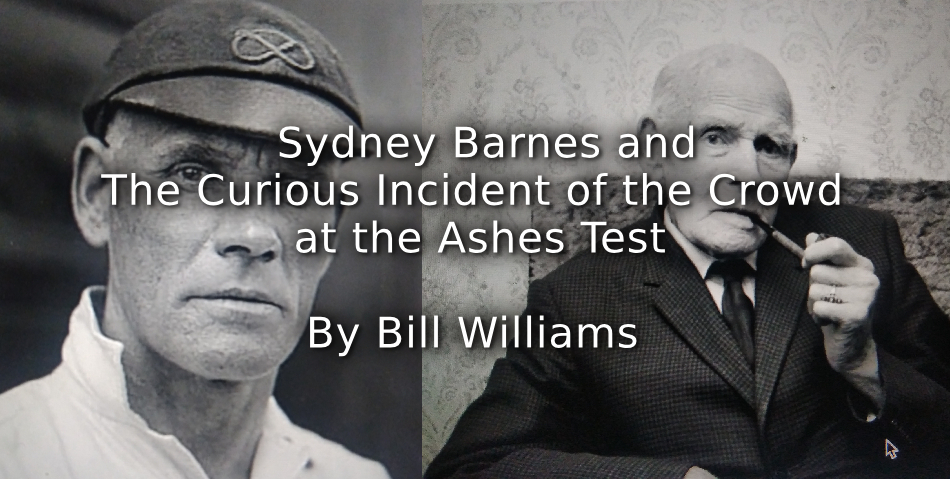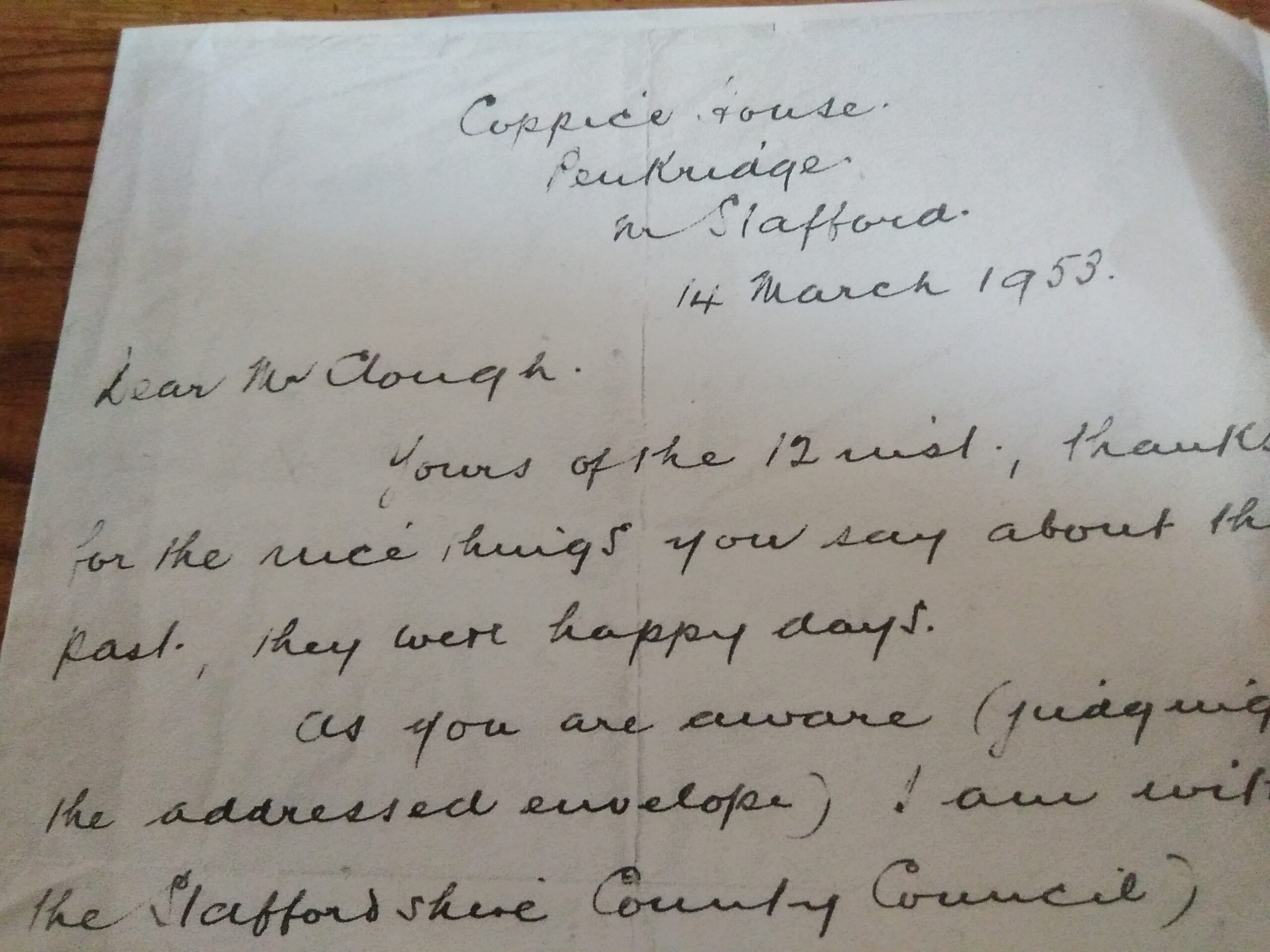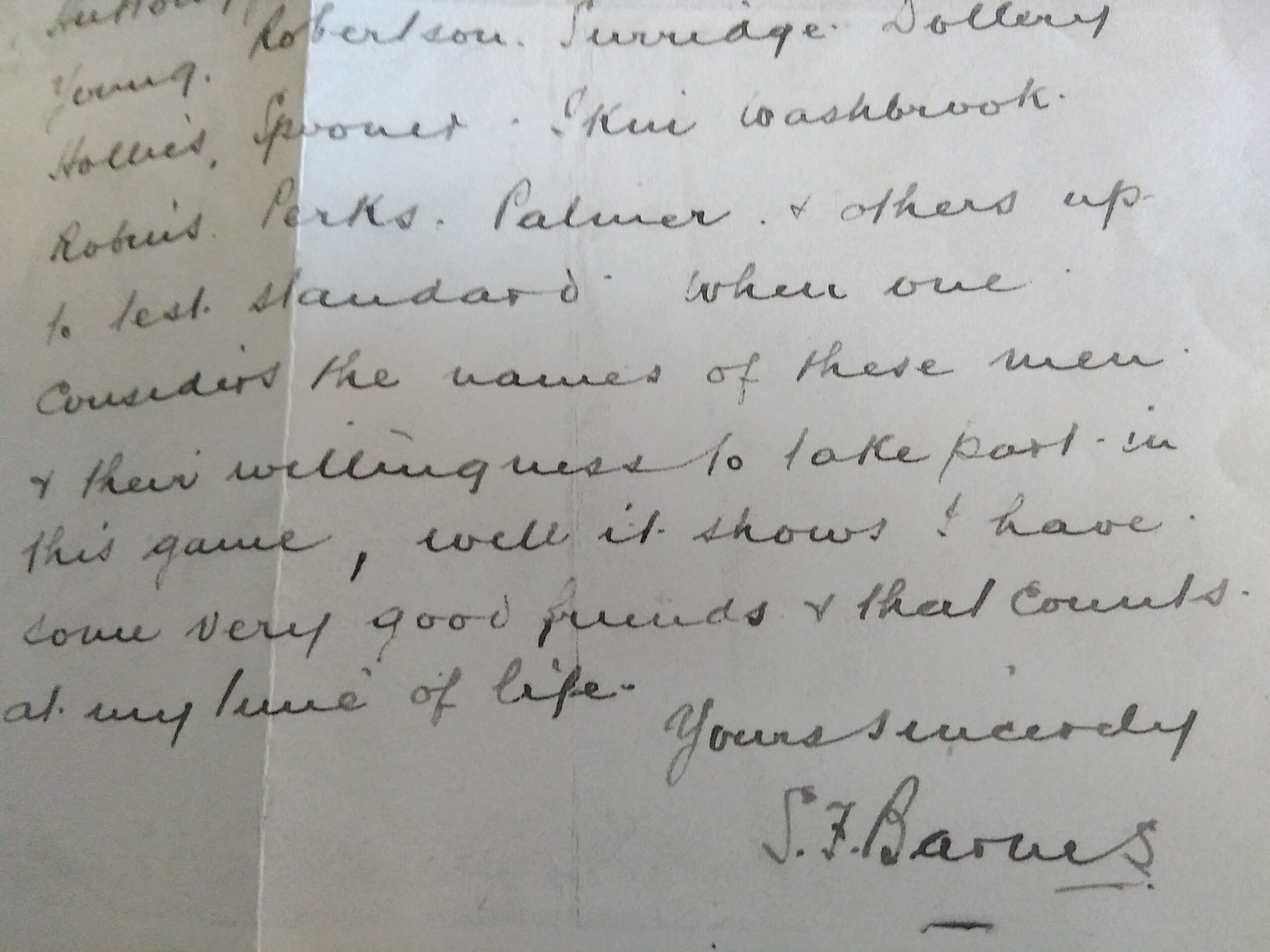A letter written by the legendary England cricketer Sydney Barnes, has recently been unearthed by amateur historian Bert Clough, whose father Albert had written to Barnes around the time of the former cricketer’s 80th birthday in 1953. It provides a fascinating insight into an ‘incident’ that took place at the second Ashes test in Melbourne in December 1911, which Barnes describes with great clarity.
The letter received by Albert Clough in 1953
A few days before the second test, Barnes had woken up soaked in sweat: ’I had contracted a severe cold’, he recounted in his letter, ‘but by careful treatment, I was somewhat fit for the match’. He would later say that although he felt weak, he had a curious feeling that he could do ‘anything with the ball’; he very nearly did.

MCC team in Australia 1911/12
By lunch, he had bowled for an hour and ten minutes and Australia had limped on to 32-4, Barnes had bowled 9 overs, 6 maidens and had taken 4 wickets for 3 runs and by now was feeling very dizzy, so he took a well- earned break; he had produced one of the greatest spells in test match history.
Barnes fussy and meticulous, took his time in setting his field when he came back on to bowl: ‘The fielders were placed quite differently to mine and it caused a slight delay’, he remembered. However, the crowd of 96,000, began to show some irritation:
‘It was then’ says Barnes, ‘that a curtain of booing and catcalls took place and shouts of ‘’Haven’t you got a captain?’’ To this, I took exception and dropped the ball to the ground and ignoring these spectators, I had a word with the umpire’. Then at once a round of cheering and handclapping went around the ground.’
The reaction to Barnes by the Melbourne crowd was very vocal, with many barracking him for deliberating on his field settings, so he refused to continue until they calmed down; when he did resume, he received what he described as, ‘a good reception’.
He finished the innings with the figures of 23 overs 9 maidens 5 wickets for 44 runs, effectively stopping the Australians from getting into the game and enabling England to win the match; the spell cemented Barnes’ status as one of the greatest bowlers of all time.
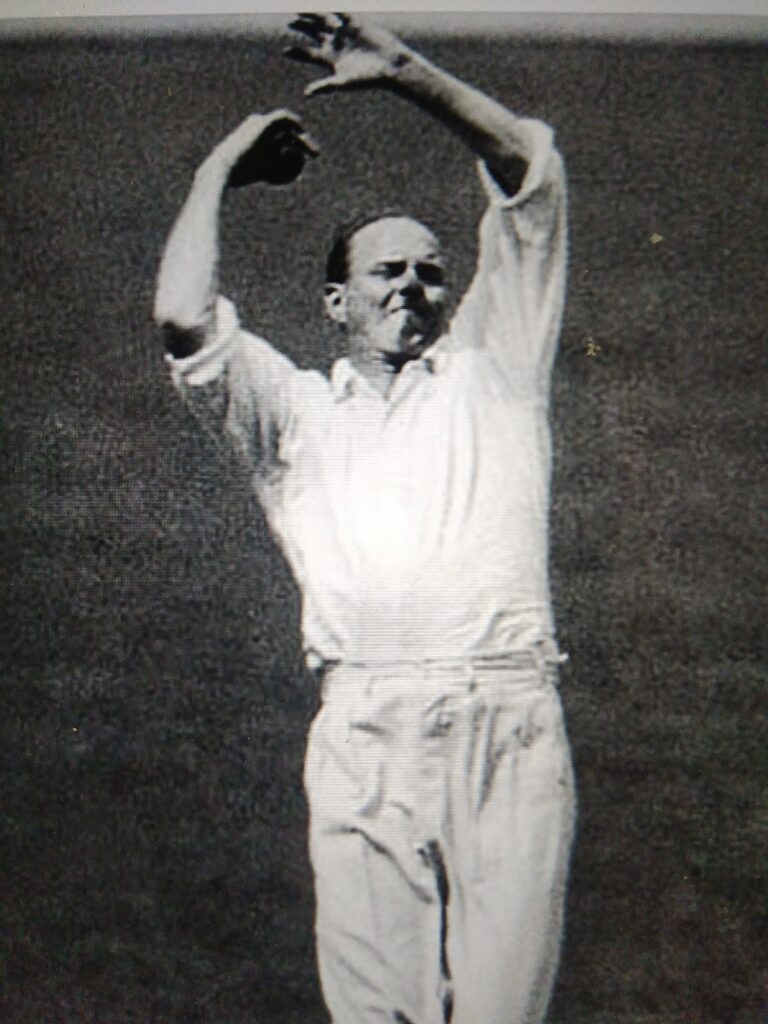
Barnes later in his career c1925.
He would continue to play for Staffordshire until he was 62.
Barnes according to Richard H Thomas in Cricketing Lives (2021) was
undoubtedly the grumpiest man ever to play cricket. Giving him some latitude, perhaps, it was more about self -confidence and the statistics seem to bear that out
He still holds the highest ICC rating for a test bowler of all time, which is a retrospective rating assigned by the International Governing Body ( calculated by an algorithm that takes into consideration wickets taken, runs conceded and the match result), which still has him 32 points ahead of James Anderson who was the first England player in 38 years to pass 900 points in 2018; coincidentally, Barnes and Anderson had both played for Burnley Cricket Club in the Lancashire League in their early careers.

Jimmy Anderson who had also played for Burnley CC in the Lancashire League
Credit: NAPARAZZI, CC BY-SA 2.0
His outstanding test career included 189 wickets at an average of 16.43 over 27 matches for England and he was reputedly the first bowler to ‘seam’ the ball, adding ‘swing’ and ‘spin’, all in the same medium-fast delivery; ‘The Barnes Ball’, was considered by many to be unplayable, which enabled him to take over 700 wickets in his first- class career. No other bowler has ever reached 150 test wickets ( in 24 matches) faster than Sydney Barnes and despite the fact that he retired from test cricket well over a century ago, he is still top of the ICC historical rankings.
Arguably, his finest world record that still stands today is that of ‘the most wickets in a test series’- 49 in only four matches on the 1913/14 tour of South Africa- but even this could have been bettered, with Barnes choosing not to play in the 5th test, due to the fact that the MCC refused to pay for his wife’s hotel accommodation.
Barnes was likely to have been one of the first test players to experience hostility from a crowd, but he was certainly not the last, however the Australian batsman David Warner although greeted by boos from the Old Trafford crowd in 2019, ( he had been suspended for punching Joe Root in a bar) and was then booed back off the crease when he was caught by Root after facing just 10 balls, actually embraced the experience: ‘ What happened was all my fault’ said Warner,’ and I’m just happy to be back and I particularly enjoyed it when the trumpeter in the crowd played the theme from ‘Rocky’ when I came out to bat.’
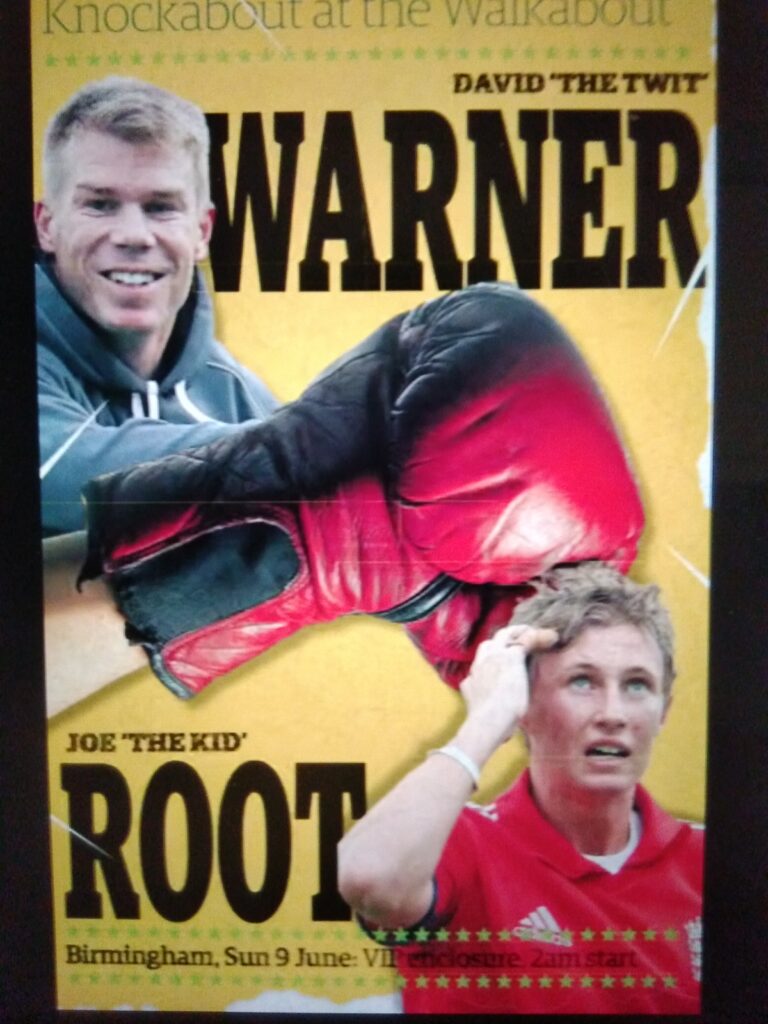
Warner v Root 2019
Sydney Barnes never accepted that it was his fault that the crowd were booing him and in his letter over 40 years later, it was evident that he did not take the blame for the crowd’s reaction and in fact suggested that he was totally justified in refusing to continue until they stopped, which I believe to be unprecedented in test match history.
The incident highlighted Barnes’ unwillingness to conform to the expectations of the cricket establishment and contributed to his reputation as a brilliant but troublesome figure who prioritised his own demands for respect and fair treatment, even if it meant challenging the norms of cricket.
Throughout his career, he challenged the cricket authorities by prioritising his financial security over his cricket commitments and his preference for the ‘league system’ rather than county cricket was significant, as it demonstrated that players could find professional fulfilment outside the traditional pathway; he also continued to play for Staffordshire in the Minor Counties Championship, even while being selected for England, because it offered him a more reliable income and job security.
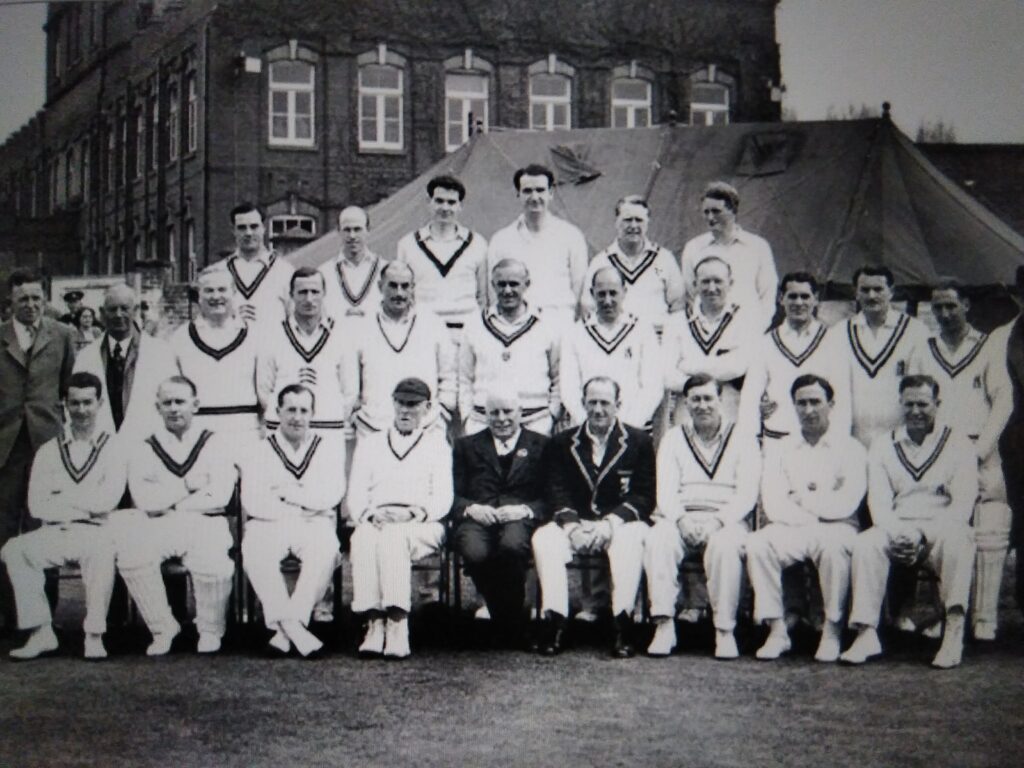
The Birthday Testimonial Match in 1953.
Barnes is on the front row fourth from the left.
Sydney Barnes was a true cricket icon, so highly regarded by his contemporaries and those who came after him, that in his letter he ends by making reference to a ‘Birthday Match’ organised by the people of Stafford at Stafford Cricket Club, to celebrate his 80th:’ I can tell you,’ recalled Barnes, ‘ that no one has ever received a greater compliment and there will be 15 England players taking part, including Bill Edrich, Dennis Compton and Stuart Surridge’; over 5,000 people attended with Barnes bowling the ceremonial first over ( a maiden), despite his advancing age.
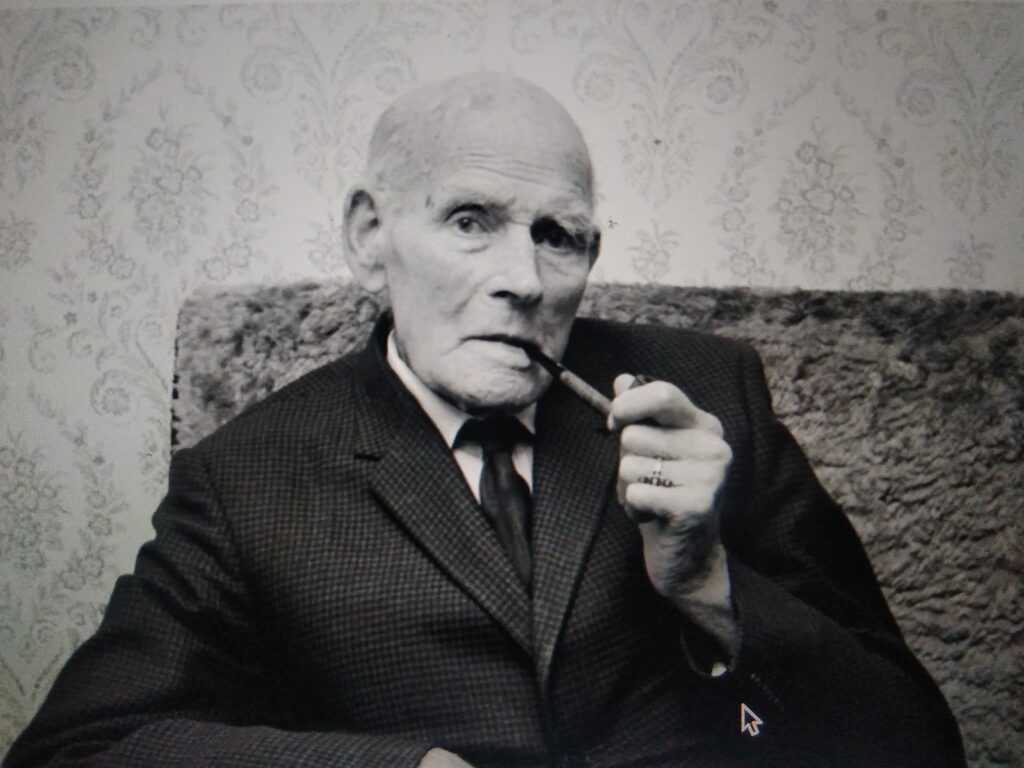
Barnes in 1965 aged 92.
He was still attending test matches as an ex player.
Barnes finished his letter by saying, ‘I have some very good friends and that counts at my time of life.’ As an ex- player he continued to be invited to test matches well into his 90’s and despite his disputes with authority, he regained recognition, becoming an honorary member of the MCC, prior to his death in 1967 aged 94.
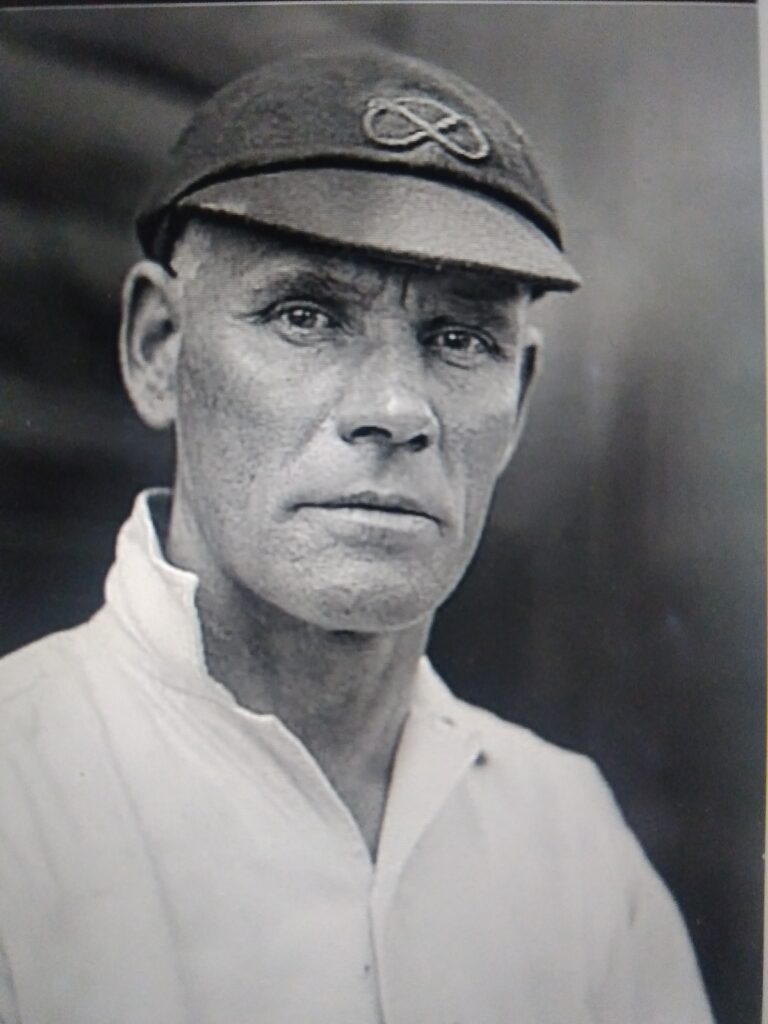
Sydney Francis Barnes ( 1873-1967)
Article copyright of Bill Williams

